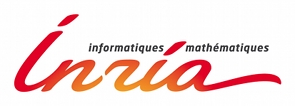
 |
 |
 |
 |
 |
 |
 |
 |
 |
|
Feng Wang and Guy Carrault and René Quiniou and Marie-Odile Cordier and Philippe Mabo Fusion de méthodes d\'apprentissage automatique et de traitement de signal pour la reconnaissance d\'arythmies , 10ème Forum des Jeunes Chercheurs du Génie Biologique et Médical , juin , 2000 , Document |
|
Abstract
Coronary Intensive Care Units (CICU), at the beginning of the nineties, led to the concept of intelligent monitoring based upon an association of signal processing methods, cardiac electrophysiological models and knowledge based system. However, very few work really achieved this full integration. Our work falls into this class of problems and aims at proposing a new approach for arrhythmia recognition. Briefly, it uses machine learning methods to learn the key features of each arrhythmia - either from real observations or from signals generated by a cardiac model - and to generate chronicles (sets of temporally constrained events). Then, these chronicles are matched, by means of chronicle recognition techniques, on the output of a signal processing module. This last one performs the detection of the cardiac event by means of a multisensor multisource approach, delineate each wave by using a dedicated hidden markov model, characterize each beat by a parameter vector from a wavelet decomposition. All these events are then used to build the symbolic observed sequence. The first results are rather interesting and prove the feasibility of the approach. As an example, the learned chronicles are expressed as first order rules and are directly interpretable by an expert of the field. In addition to its applicability in cardiology, the suggested approach can be extended to other fields of biomedical since structured events appear on the signals.
Key Words : Hidden Markov Model, Wavelet transform, Inductive Logic Program, Chronicle Recognition. |
|
This web site is maintained by René Quiniou using the Weave system from the Caravel project: http://www-caravel.inria.fr. Last modification: 10-07-2011 09:54:25 |
Version française |